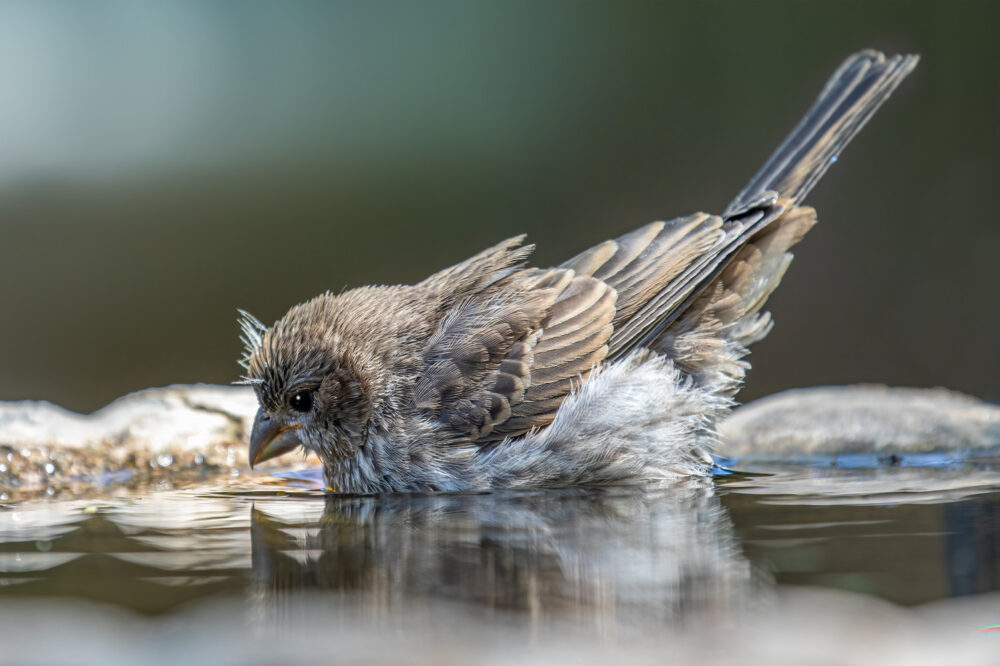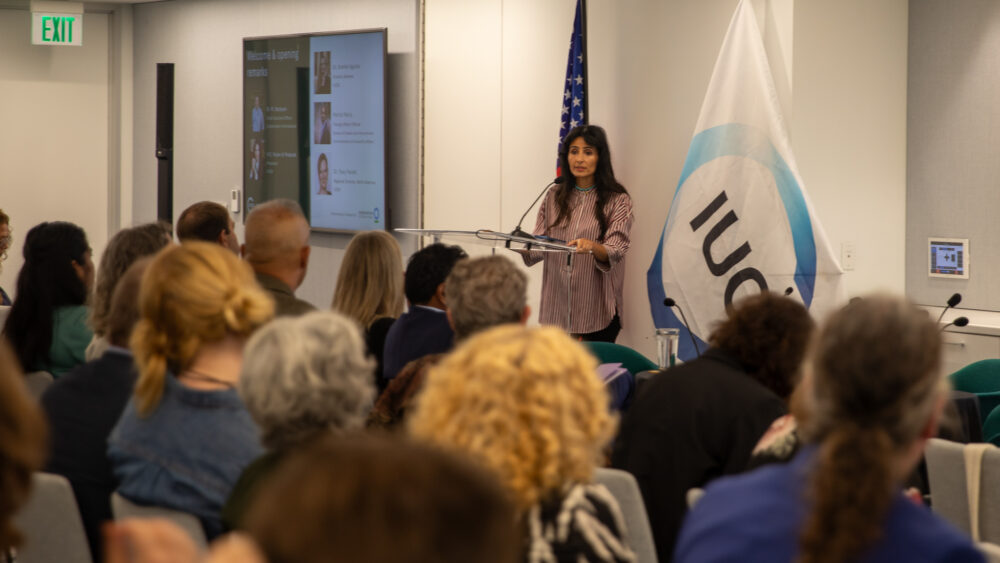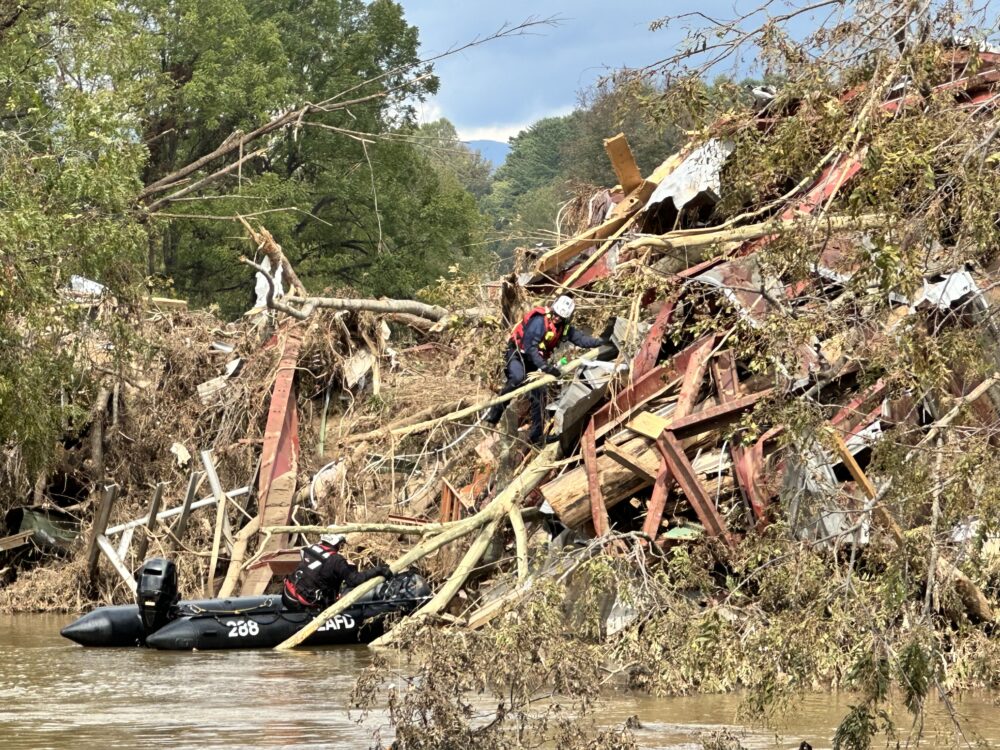We have much more to do and your continued support is needed now more than ever.
50 Years of the Endangered Species Act: A Gulf Coast Success Story
2023 marks the 50th anniversary of the U.S. Endangered Species Act (ESA), a landmark federal legislation that is hailed for protecting over 1,600 species across the country. This essential law lays the groundwork for the recovery of endangered species nationwide and across the globe. The National Wildlife Federation wishes to celebrate 50 years of national successes in hopes of many more to come, and of overcoming growing concerns surrounding reduced congressional support and funding for the ESA. Keep up with us this summer as we highlight several beloved Gulf Coast species who have benefitted from the ESA, demonstrating the effectiveness of this law.
The Brown Pelican: A Coastal Success Story
If you’ve visited the shores of the Gulf of Mexico, you’ve probably witnessed the Brown Pelican soaring along the coast. With his massive 6 to 8-foot wingspan, he flies weightlessly above the blue ocean, ready when the opportune moment strikes to plunge downward into the sea and scoop up gallons of fish-filled waters into his pouch. The official state bird of Louisiana, this iconic species was first declared endangered in 1970 and immediately listed when the ESA was signed into law in 1973.
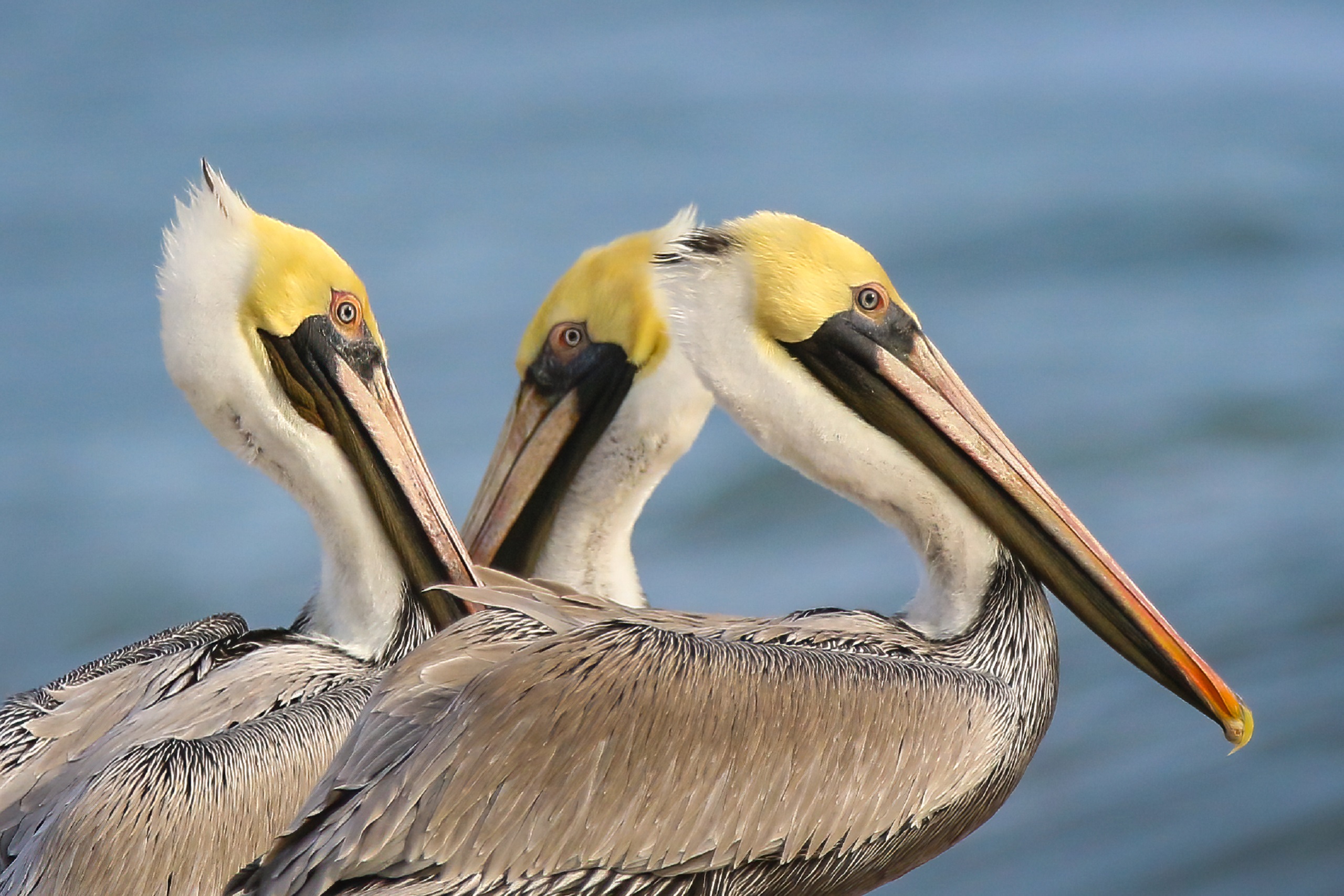
In the early 1900s, pelicans were one of countless bird species that were plume hunted; their feathers were popular embellishments on hats and other decorations. Later in the century, widespread use of a noxious pesticide called DDT was causing widespread wildlife mortality and environmental destruction. DDT caused many bird species’ eggs to be too thin and fragile to properly hatch, and the brown pelican population plummeted because of it. By the 1960s, there were virtually no brown pelicans left in the entire state of Louisiana. DDT drove the Louisiana State Bird perilously close to extinction.
In 1972, the US Environmental Protection Agency (EPA) banned the use of DDT. By this time, biologists in Louisiana and Florida were already hard at work to bring the brown pelican back to coastal Louisiana. Nearly 800 brown pelican chicks were reintroduced to several sites, including Queen Bess Island in Barataria Bay. The project was a huge success, and brown pelican numbers grew significantly.
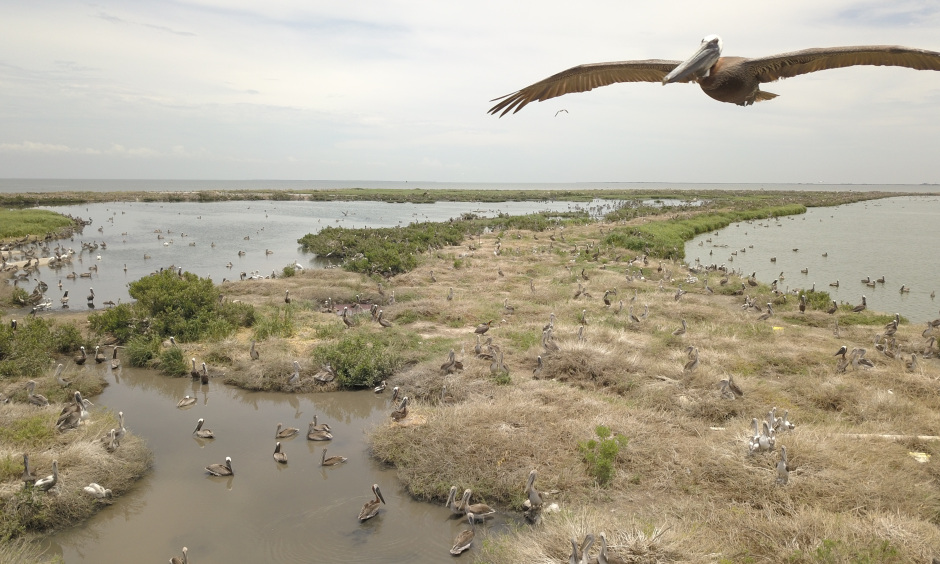
Reintroduction efforts were hugely successful, and the brown pelican was removed from ESA coverage in 2009. While we celebrate this overall conservation success, we recognize that brown pelicans today across our nation still face multiple, complex pressures: entanglement in fishing lines at piers, competition with commercial fisheries for food and habitat destruction from coastal development and climate change. The 2010 Deepwater Horizon Oil Spill also significantly impacted brown pelicans, especially in Louisiana.

Coastal Restoration In Louisiana
Fortunately, banning DDT was a simple solution to that specific problem. With today’s population booms, climate change, and political tensions, conservation can be complex and requires a multi-faceted approach. Settlement money from the Deepwater Horizon Oil Spill continues to be used on the ground to restore wetlands and barrier islands, improving nesting habitat for bird species that were injured. In Louisiana, oil spill settlement funding was recently used to further restore the eroding Queen Bess Island, which supports an array of coastal birds. Today Queen Bess Island is teeming with nesting birds and proudly stands as one of the largest brown pelican rookeries in the state.
Other Louisiana islands like Isle au Pitre and Terrebonne Bay Houma Navigation Canal (HNC) Island will also be re-nourished and elevated with sediments, as well as protected from storm surge and further erosion with the addition of wave impact dispersers like oyster reefs. Native vegetation will be re-planted so that pelicans, gulls, and terns have a place to nest and shelter.
Coastal Louisiana is facing a land loss crisis, and every hurricane season brings fear of more devastation. The Louisiana Coastal Protection and Restoration Authority (CPRA) is implementing dozens of on-the-ground projects in order to address these plights while aiding wildlife and humans alike. Along with restoring barrier islands, the CPRA is actively working to create and restore over 18,000 acres of coastal marsh from Cameron to Plaquemines Parish. Especially when combined with large-scale sediment diversion projects like the one in Mid-Barataria, these marshes build land that protects the coast and provides enduring habitat for birds, mammals, and aquatic life.
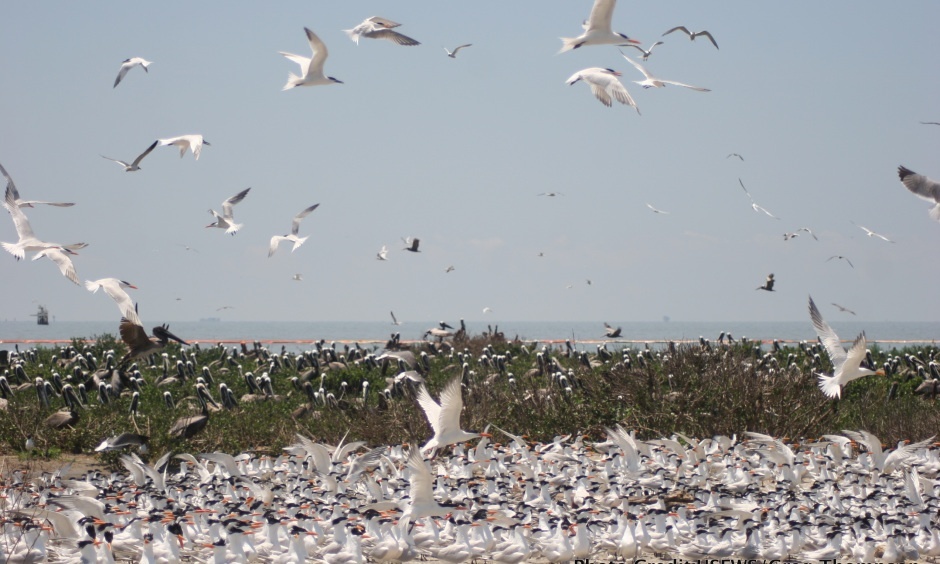
NWF works with partners throughout the state to advocate for using restoration funds in scientifically sound ways to improve and expand wildlife habitat. As we face unprecedented biodiversity loss across the globe, it’s important to celebrate the many conservation successes that have happened – and will continue to happen. We have the ESA to thank for much of that.
Learn more about what NWF is doing to restore the Gulf of Mexico and to protect endangered species.

